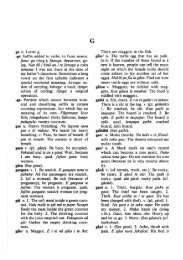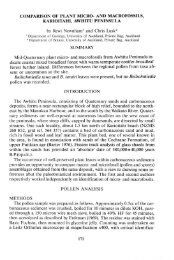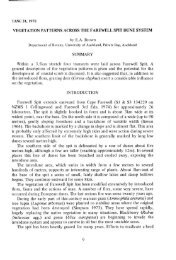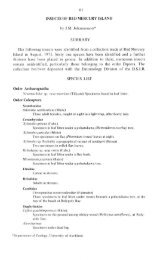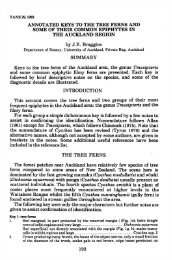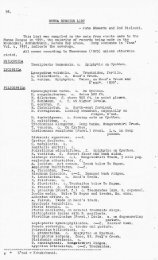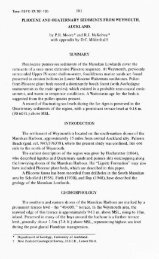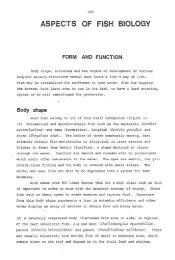METRES - Bookshelf Collection - The University of Auckland
METRES - Bookshelf Collection - The University of Auckland
METRES - Bookshelf Collection - The University of Auckland
You also want an ePaper? Increase the reach of your titles
YUMPU automatically turns print PDFs into web optimized ePapers that Google loves.
12<br />
Faults were rarely observed on the island but three subvertical fractures<br />
exist in Ngatoka Puta Bay, striking approximately NNW and with one to six<br />
metres downthrow to the west.<br />
One cliff section <strong>of</strong> particular interest is that on the east coast <strong>of</strong> Te Renga-<br />
renga in section C — C (fig.5). Here a large mass <strong>of</strong> basaltic lava (c'), 200 metres<br />
across and 30 metres high, conformably overlies a tuff bed, breccias and flow c.<br />
This mass (c') is subhorizontal with a comparatively flat upper surface and very<br />
steep (50 — 60°) irregular sides. This upper surface is overlain by a tuff bed<br />
that is semi-continuous down the sides, where it has accumulated in irregular<br />
hollows. On either side <strong>of</strong> c' the overlying tuff bed is directly on top <strong>of</strong>, and<br />
conformable with, the tuff bed that underlies c'.<br />
Because there is no evidence <strong>of</strong> erosion or intrusion, it can only be assumed<br />
that c' was emplaced in its present form as a huge ejected volcanic plug, or more<br />
likely as an extremely viscous lava flow, c' is <strong>of</strong> considerable importance when<br />
considering the sequence <strong>of</strong> events during the emplacement <strong>of</strong> the lower Whakau<br />
Volcanics sequence, as the character <strong>of</strong> the flows and breccias to the east is<br />
is markedly different from that to the west (see Stratigraphy).<br />
SECTION c-c Te Rengarenga<br />
Fig. 5. Detailed cliff section around Te Rengarenga.<br />
STRATIGRAPHY<br />
Red Mercury Island is composed <strong>of</strong> a complex sequence <strong>of</strong> interstratified<br />
basalt flows, breccias, scoria and tuff beds, intruded by dykes and the Te<br />
Kokowai Intrusion, that together comprise what is here termed the Whakau<br />
Volcanics. <strong>The</strong> authors consider that this informal formational unit cannot be<br />
correlated with the andesitic Beesons Island Volcanics or any other recognised<br />
unit.<br />
<strong>The</strong> island was circumnavigated by boat and on foot and the entire cliff<br />
exposure mapped. Twenty-four stratigraphic columns have been constructed



